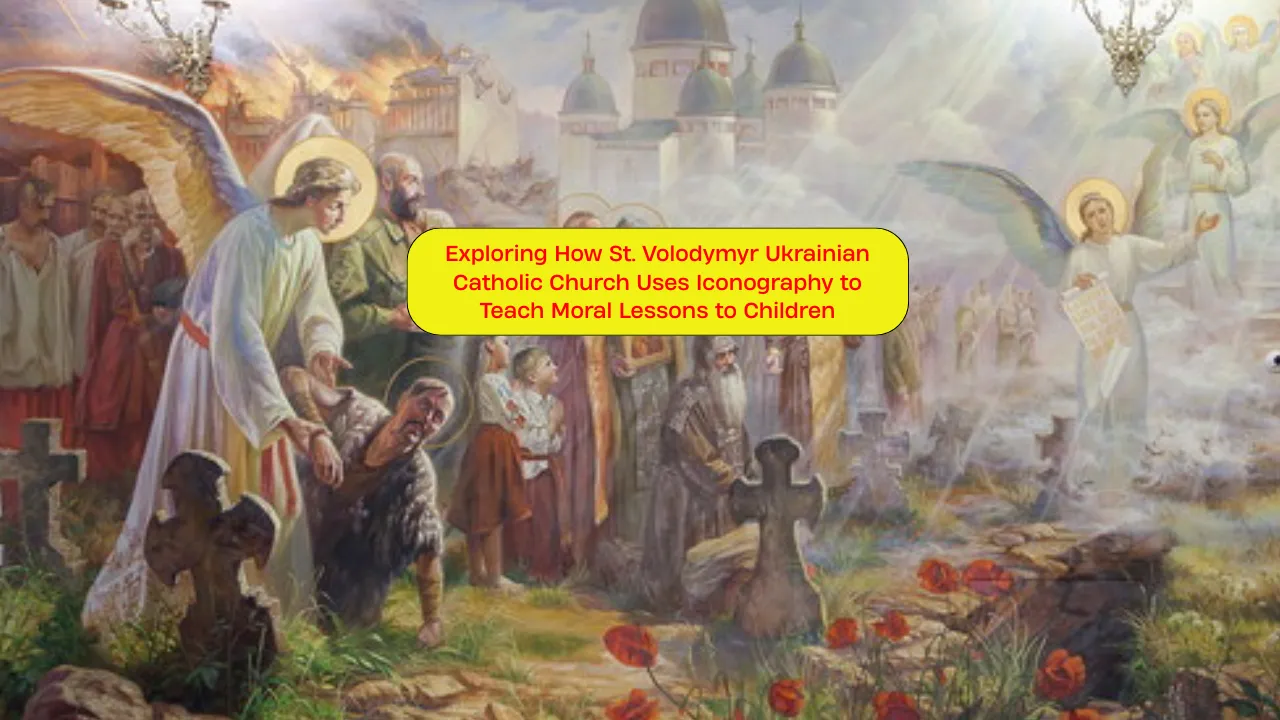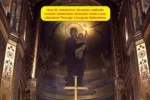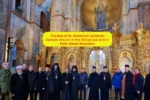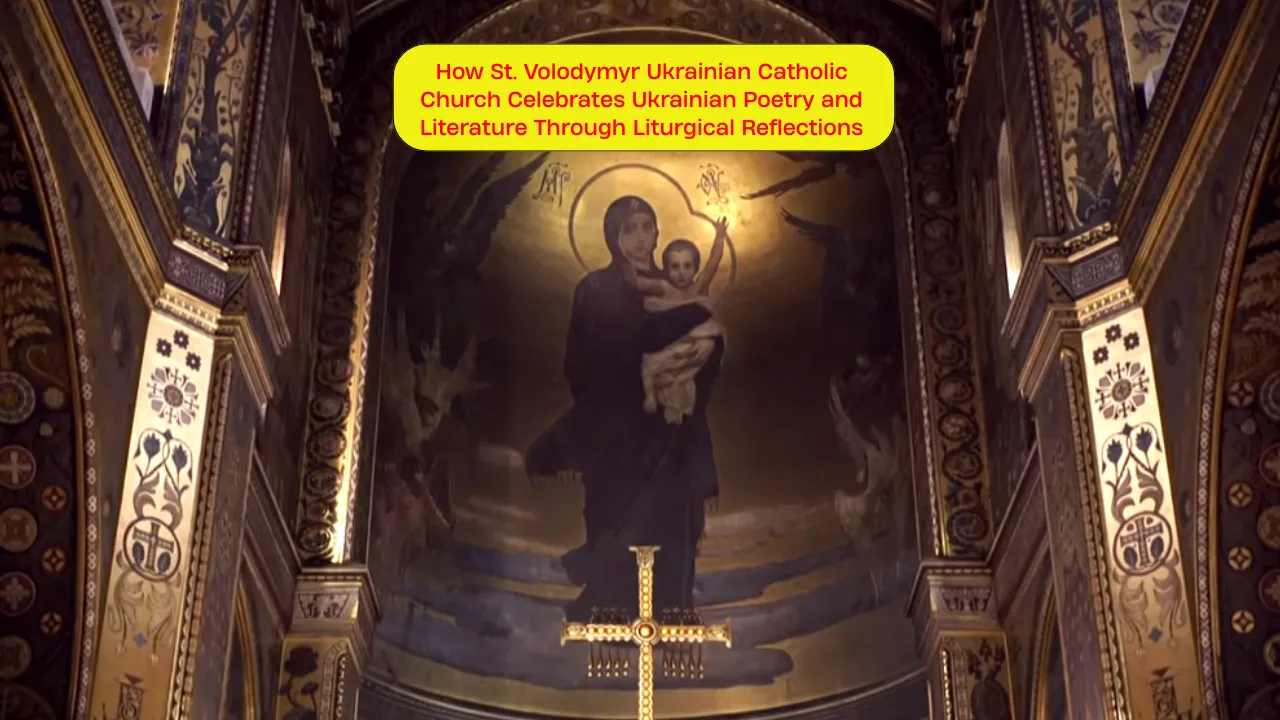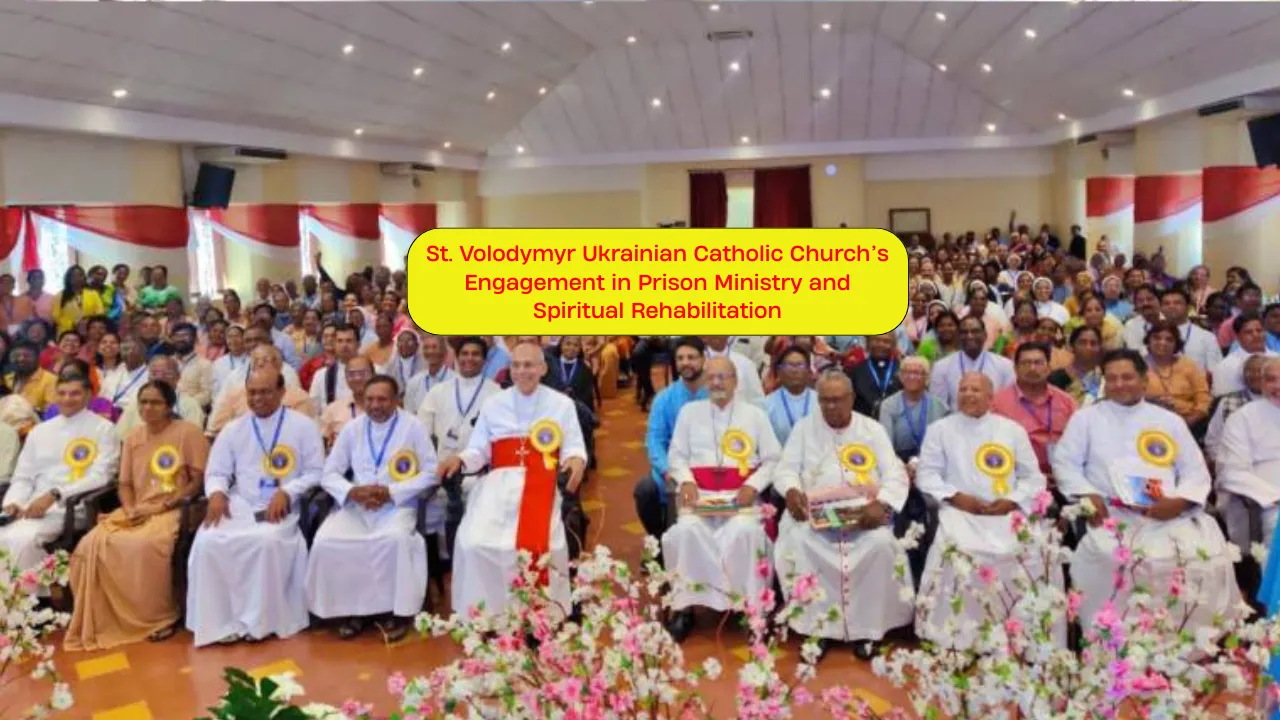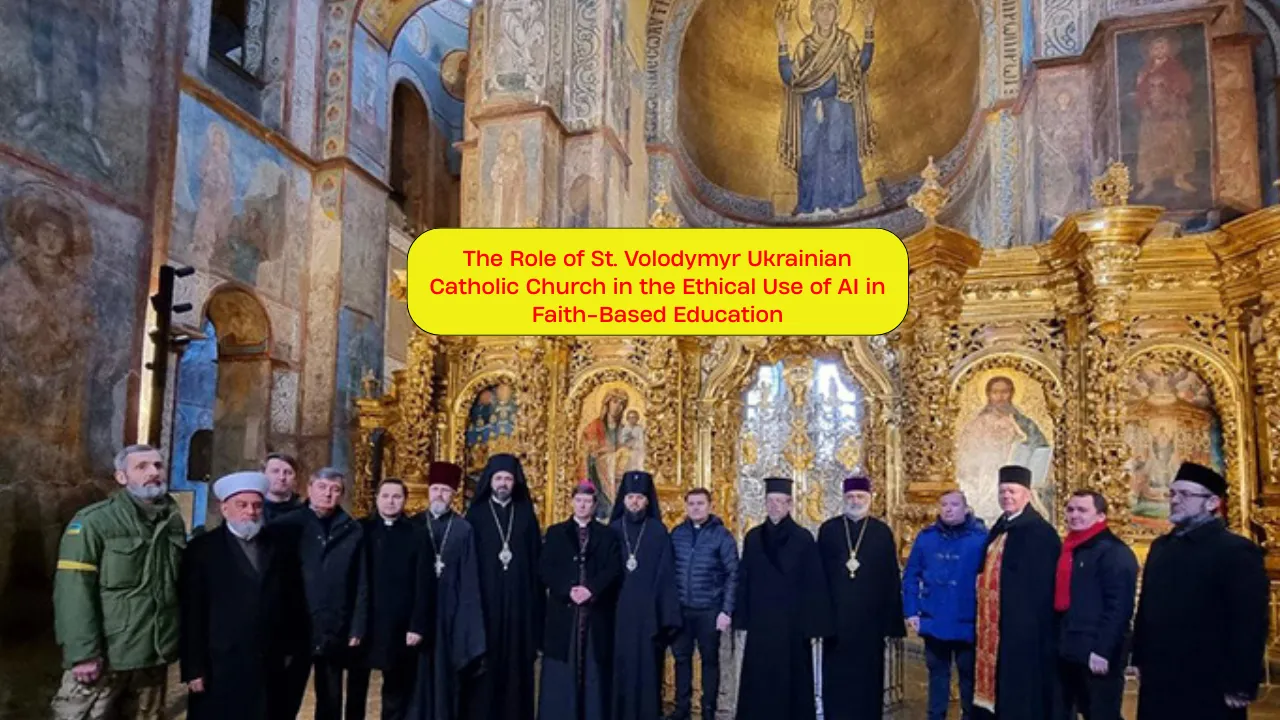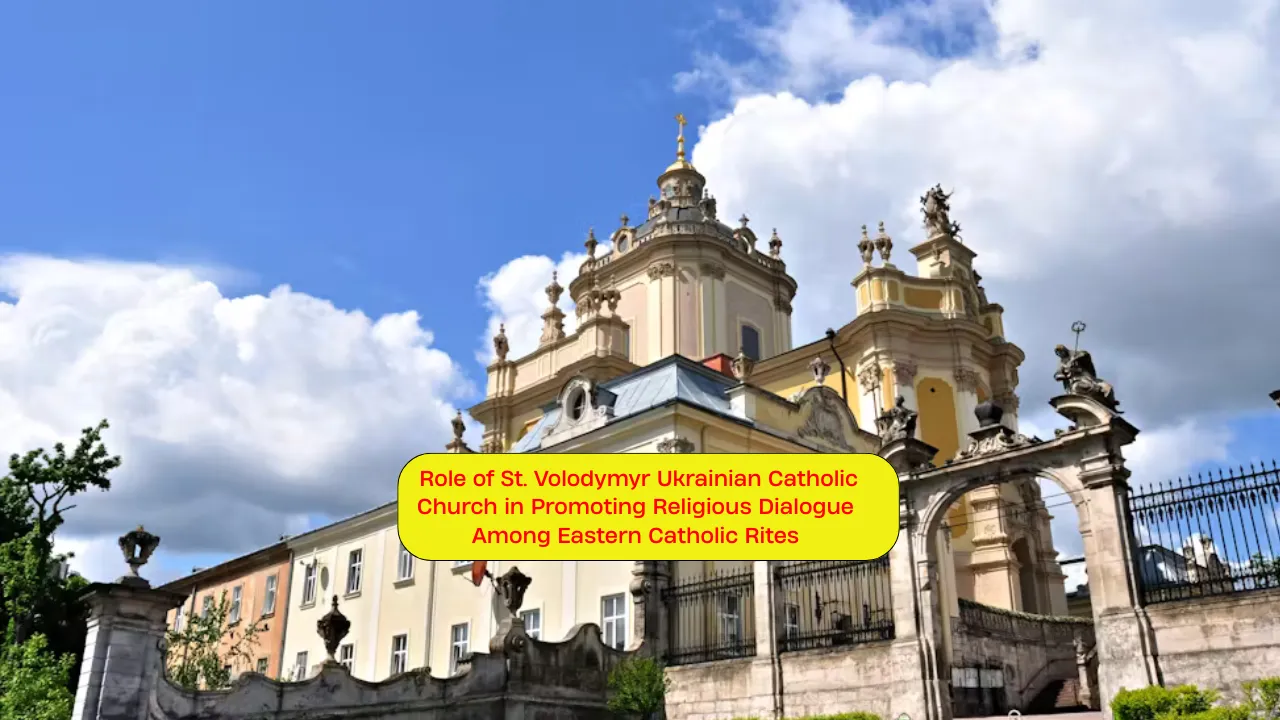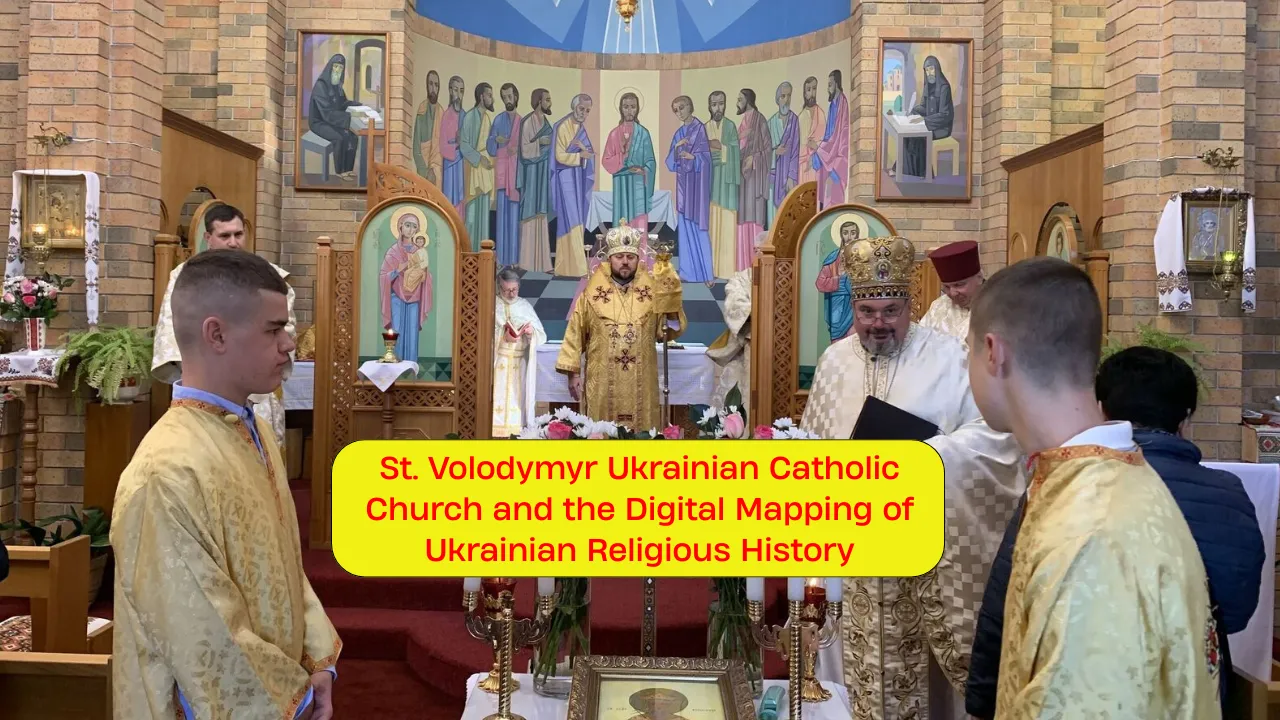St. Volodymyr Ukrainian Catholic Church serves as more than just a place of worship; it is a visual sanctuary where faith, art, and early moral education beautifully intersect. Unlike traditional learning settings, the church relies on iconography to connect spiritual teachings with the minds and hearts of children. This sacred space transforms into a classroom without walls, where children learn not by reading or listening alone, but by seeing and experiencing.
This article dives into the church’s unique use of iconography to educate children about virtues, life choices, and foundational spiritual stories. We’ll explore the intention behind this approach, how it’s implemented, and why it’s proving to be a powerful tool in children’s religious development. From the emotional pull of sacred visuals to the interactive ways kids are engaged, the article outlines a model that blends art and belief in a way that leaves a lasting impression.
St. Volodymyr Ukrainian Catholic Church and Its Role in Visual Faith Education
St. Volodymyr Ukrainian Catholic Church has created a strong foundation for moral and spiritual education using visual storytelling. By relying on iconography—an artistic tradition central to the Eastern Catholic faith—the church introduces young minds to lessons of compassion, bravery, humility, and love. Rather than using only lectures or textbooks, the church transforms sacred art into a spiritual learning experience. These images speak directly to children, inviting them to explore religious stories through relatable, visual cues. This method connects theology with daily life in a way that children can feel, reflect on, and carry with them.
Overview Table: Teaching through Iconography
| Aspect | Description |
| Teaching Method | Use of religious imagery and icons to convey moral stories and faith lessons |
| Target Audience | Children aged 4–12, primarily within the church community |
| Visual Focus | Saints, biblical events, acts of virtue shown through symbolic art |
| Learning Tools | Guided tours, art sessions, family visits, and educational discussions |
| Learning Outcomes | Better understanding of kindness, courage, forgiveness, and love |
The Power of Iconography in Teaching
Iconography, especially in the Eastern Catholic tradition, is not decorative—it is a visual theology. Within St. Volodymyr Ukrainian Catholic Church, icons are designed to teach and inspire. For children, these sacred images are simplified windows into deep theological truths, made accessible without complex explanations. They show stories children might otherwise find hard to grasp, such as sacrifice, redemption, or grace.
Unlike written stories, icons are permanently present. A child may see the same image every Sunday, slowly absorbing its meaning. Saints are not only figures in a book—they are faces with expressions, actions, and stories that live on the church walls. Children associate these figures with virtues and start to internalize those values naturally.
Visual Storytelling for Young Minds
Children learn best when their imagination is activated, and that’s exactly what iconography achieves at St. Volodymyr Ukrainian Catholic Church. The icons feature vibrant colors, symbolic gestures, and clear actions—making them instantly engaging for young viewers. Jesus feeding the hungry, Mary comforting others, or angels guiding believers are not abstract concepts anymore—they’re vivid, recognizable scenes that children can understand without needing translations.
More importantly, the icons do not just illustrate stories—they highlight the emotions and values behind those stories. Compassion, sacrifice, love, and courage are visualized. As a result, children connect to the moral messages intuitively, often retelling these stories in their own words or acting them out.
How the Church Involves Children in Learning
What sets St. Volodymyr Ukrainian Catholic Church apart is its hands-on approach to religious education. Children are not passive observers of these icons—they are active learners. After services, young parishioners may be invited to walk through the church with a catechist or parent, pausing to discuss the meanings behind each piece of art.
Sometimes, workshops are organized where kids learn about the colors and symbols used in iconography. For example, they discover why halos are golden, or what certain hand gestures mean. Children also draw their own versions of saints or biblical scenes—not to replicate the sacred icons but to express what they’ve learned through their own creativity.
This interaction fosters a deeper understanding of spiritual values and encourages children to take ownership of their faith journey.
Why Iconography Works Better Than Words Alone
Most children aren’t wired to sit through long lectures. But place them in a space full of meaningful imagery, and their minds become engaged. St. Volodymyr Ukrainian Catholic Church capitalizes on this by offering faith instruction that doesn’t rely on attention span—it builds on observation and reflection.
Visual learning taps into children’s natural curiosity. When a child sees Saint George defeating a dragon or Saint Nicholas giving to the poor, they ask questions. These questions open the door to conversations about fear, courage, sharing, and humility. In this way, iconography becomes a bridge between adult theology and a child’s everyday life.
Key Lessons Children Learn Through Iconography
- Kindness and Helping Others: Scenes like the Good Samaritan or Saint Martin sharing his cloak show the power of caring for others, even strangers.
- Bravery and Faith: Icons portraying early martyrs or saints standing strong in the face of hardship inspire children to stay strong and believe in doing what’s right.
These teachings aren’t abstract—they’re anchored in colorful, memorable images that stay with children as they grow.
Role of Family in Icon Learning
While the church lays the groundwork, families carry the message further. St. Volodymyr Ukrainian Catholic Church encourages parents to engage with their children during visits—asking what they see in the icons, what they think the scenes mean, and how they might act the same way in their own lives.
Some families even bring small icons into their homes. These mini versions serve as quiet reminders of the larger stories told at church and create space for bedtime stories or morning reflections that reinforce spiritual values.
This collaboration between church and home strengthens the message and makes it easier for children to live out the values daily.
Creating a Friendly Space for Children
Children thrive in environments that feel welcoming, and St. Volodymyr Ukrainian Catholic Church is intentional about creating that space. The church is calm, warm, and designed to invite exploration. It doesn’t feel rigid or overly formal to young visitors. It feels safe.
This openness makes it easier for children to connect with their faith. They associate church with learning, imagination, and kindness—not rules or scolding. Over time, this positive experience shapes how they view religion and spiritual responsibility.
FAQs
What makes iconography effective in teaching children about faith?
Icons are visual and symbolic, making them more understandable and memorable for children than long sermons or abstract explanations.
Can children create their own religious art?
While they don’t make formal icons, children are encouraged to draw faith-based images as part of learning. It helps them engage with religious themes creatively.
How are parents involved in icon-based learning?
Parents are invited to explore icons with their children during visits and continue the conversations at home, making faith a family experience.
Is iconography a tradition unique to Eastern churches?
It is deeply rooted in Eastern Catholic and Orthodox traditions, but the method of teaching through images can benefit all Christian denominations.
Are there special church programs for children around iconography?
Yes, St. Volodymyr Ukrainian Catholic Church offers guided learning moments, seasonal workshops, and informal sessions that focus on icons and their meanings.
Conclusion
St. Volodymyr Ukrainian Catholic Church presents a living example of how faith can be taught through beauty, art, and storytelling. By embracing iconography as a primary educational tool, the church reaches young minds with messages that are both timeless and deeply human. Instead of passively receiving lessons, children actively engage with sacred stories, connecting moral values with imagery they grow up seeing every week.
This approach builds a strong spiritual foundation. Children raised in such an environment not only learn about their religion—they begin to live it. If you’re looking for a meaningful way to introduce faith to young learners, visit St. Volodymyr Ukrainian Catholic Church and explore how sacred visuals can light the path to moral understanding and spiritual growth.
Share your experience or bring your children to witness the beauty and depth of iconography—it may be the beginning of a faith journey they’ll never forget.
